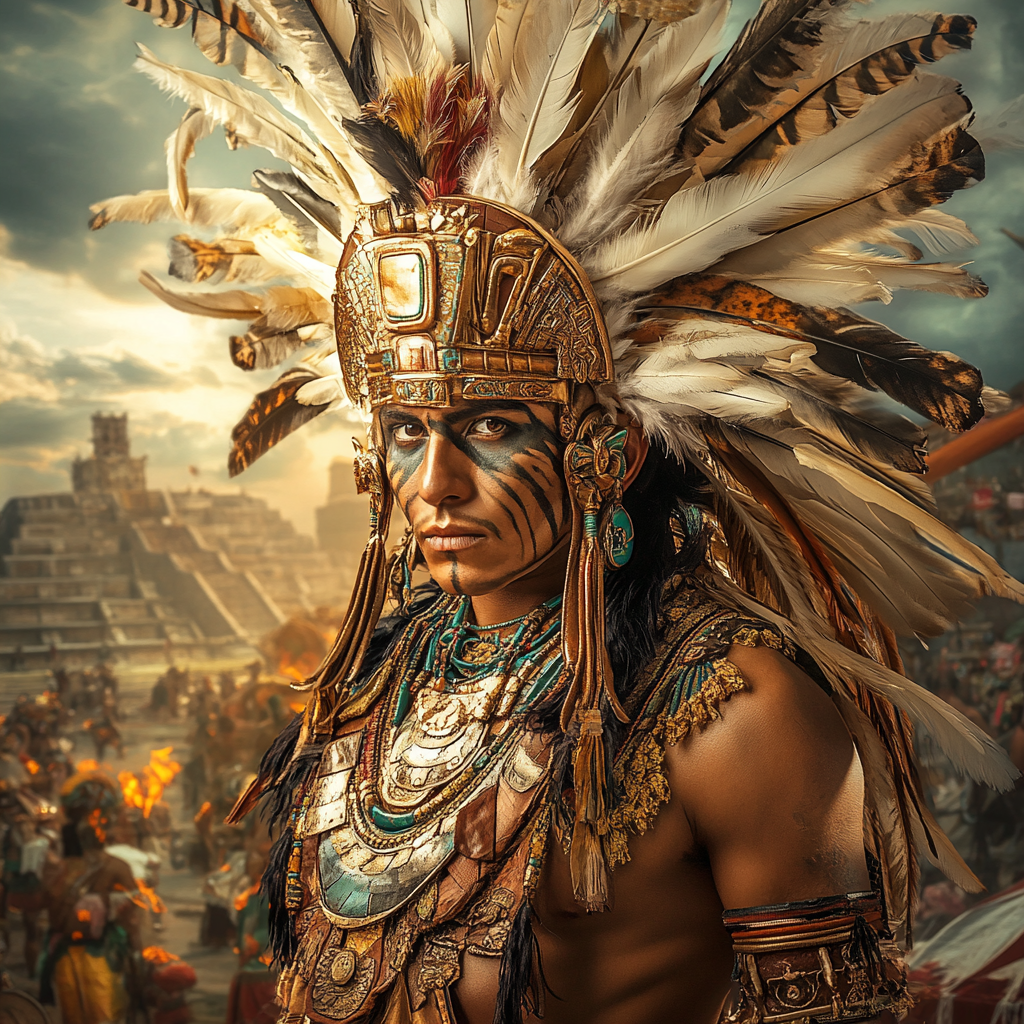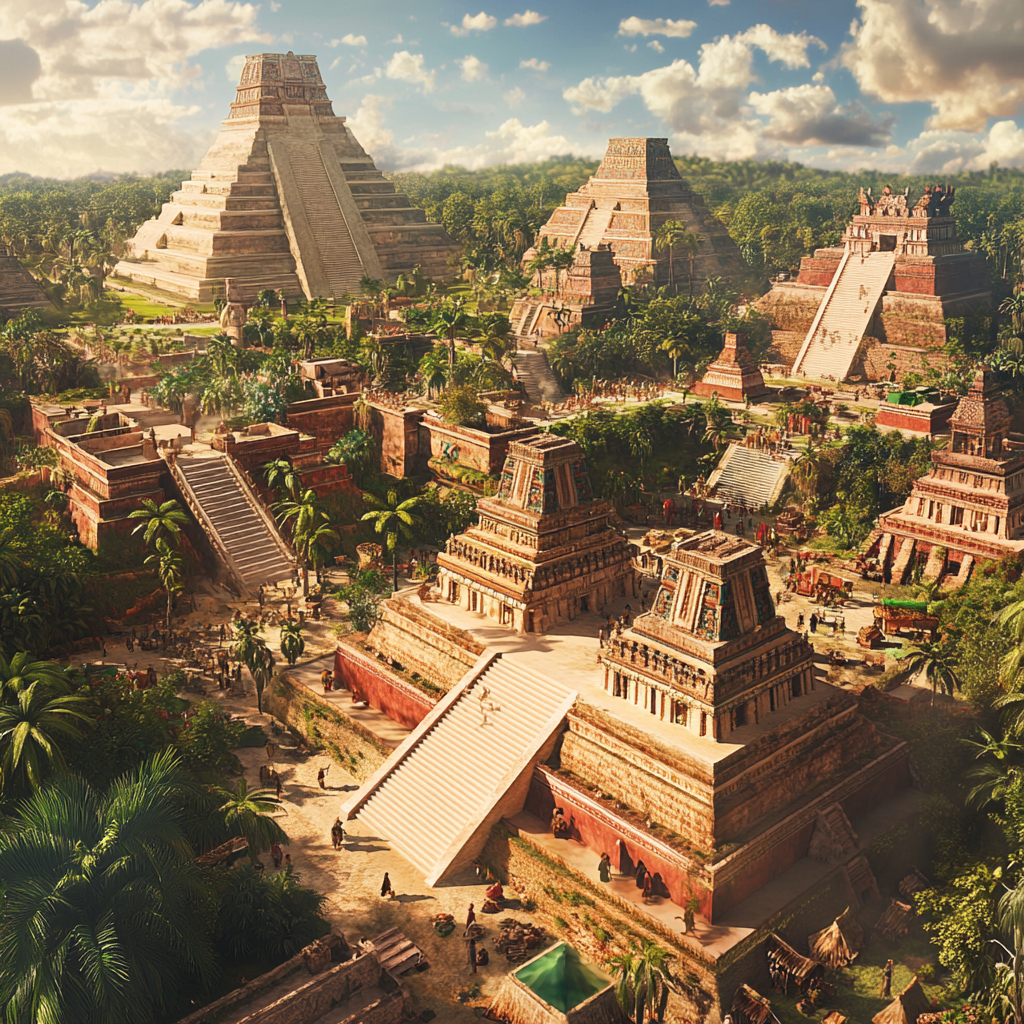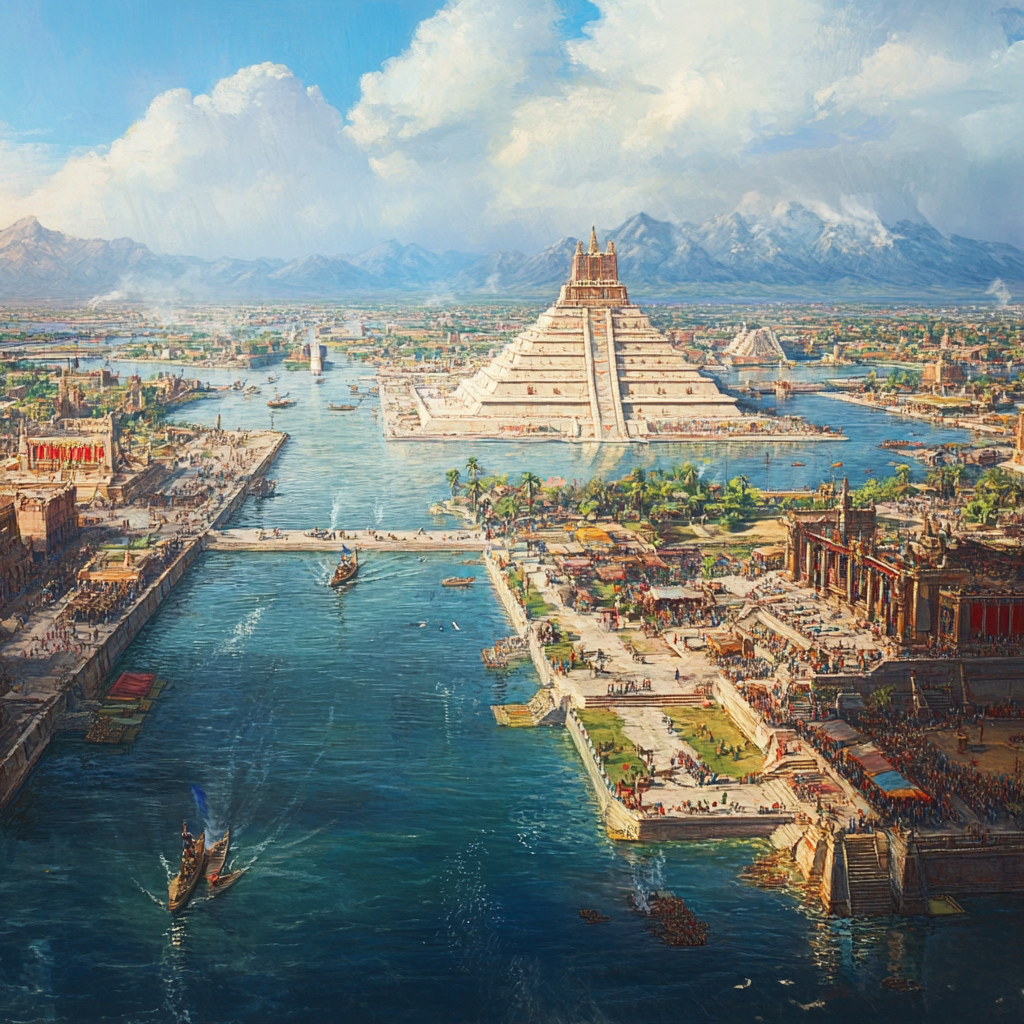500 Years Apart: Unraveling the Myths of Mayan and Aztec Civilizations
Think the Maya and Aztecs were the same? Think again! A 500-year gap separates their golden ages, yet their tales weave a rich Mesoamerican tapestry. Dive into their distinct legacies, debunk myths, and explore why they still fascinate us. Ready to uncover the truth? Join us!

Posted on Mon 10 Mar 2025 · by Ray Gudrups
Did You Know There’s 500 Years Between the Mayan and Aztec Classic Times? A Journey Through Parallel Yet Distinct Civilizations
The Mayan and Aztec civilizations are often lumped together in popular imagination as if they were one and the same—two sides of a single Mesoamerican coin. But did you know that there’s a 500-year gap between their classic periods? While these two remarkable cultures did coexist for a time, they thrived in different eras of power and influence, weaving a complex tapestry of history that challenges the misconception of their sameness. This blog post will unravel their timelines, highlight their unique legacies, and shift your perspective on these parallel yet distinct civilizations.
Description and Historical Context
The Mayan civilization reached its zenith during what’s known as its Classic period, roughly from 250 to 900 CE. This was a golden age of intellectual and cultural achievement, centered in the Yucatán Peninsula and parts of Central America.  The Maya built thriving city-states like Tikal, Palenque, and Chichén Itzá, where they developed an advanced writing system, precise astronomical calendars, and stunning architecture. Imagine a world where mathematicians calculated celestial movements with pinpoint accuracy, all without modern tools—that was the Maya at their peak.
The Maya built thriving city-states like Tikal, Palenque, and Chichén Itzá, where they developed an advanced writing system, precise astronomical calendars, and stunning architecture. Imagine a world where mathematicians calculated celestial movements with pinpoint accuracy, all without modern tools—that was the Maya at their peak.
Fast forward 500 years, and the Aztec civilization emerges as a dominant force in central Mexico. Their rise began in the 14th century, and by the time the Spanish conquistadors arrived in 1519, the Aztecs were at the height of their power.  Their capital, Tenochtitlan—now buried beneath modern Mexico City—was a marvel of urban planning and engineering, rivaling any European city of its time. The Aztecs excelled in empire-building, military conquest, and creating vast trade networks, cementing their legacy as a powerhouse.
Their capital, Tenochtitlan—now buried beneath modern Mexico City—was a marvel of urban planning and engineering, rivaling any European city of its time. The Aztecs excelled in empire-building, military conquest, and creating vast trade networks, cementing their legacy as a powerhouse.
Here’s the perspective-changing twist: while the Maya and Aztecs existed in parallel for a stretch of history, their moments of greatest power were centuries apart. By the time the Aztecs were ascending, the Maya’s Classic cities had largely declined (around 900 CE), though their culture persisted in smaller forms. This 500-year gap between their peaks reveals not a single story, but two distinct chapters in Mesoamerica’s saga.
Myths and Misconceptions
One of the biggest myths is that the Mayan and Aztec civilizations were either the same or seamlessly transitioned from one to the other. In reality, they were separate cultures with their own languages, traditions, and identities. The Maya spoke various Mayan languages, while the Aztecs used Nahuatl. Their religious practices, though sharing some traits like polytheism and human sacrifice, featured different gods—think Kukulkan (the Mayan feathered serpent) versus Huitzilopochtli (the Aztec war and sun god).

Another misconception is that both mysteriously vanished. The Maya’s Classic period ended around 900 CE due to factors like overpopulation or environmental strain, but their people and culture endured, with descendants thriving today. The Aztecs, however, met a dramatic end with the Spanish conquest in 1521, toppling their empire in a matter of years. These distinct fates further underscore their separation in time and destiny.
Theories and Perspectives
To grasp this 500-year divide, picture Mesoamerican history as a vibrant, overlapping mosaic rather than a straight line.  The Maya’s Classic period (250-900 CE) was an era of innovation and city-state rivalries, while the Aztecs’ peak (14th-16th centuries) was defined by centralized power and conquest. Between these highs, other cultures—like the Toltecs—bridged the gap, influencing the Aztecs’ rise. This interconnected yet staggered timeline shows how Mesoamerica pulsed with diversity, not uniformity.
The Maya’s Classic period (250-900 CE) was an era of innovation and city-state rivalries, while the Aztecs’ peak (14th-16th centuries) was defined by centralized power and conquest. Between these highs, other cultures—like the Toltecs—bridged the gap, influencing the Aztecs’ rise. This interconnected yet staggered timeline shows how Mesoamerica pulsed with diversity, not uniformity.
Here’s the game-changer: while the Maya were past their prime when the Aztecs began building their empire, the two civilizations did overlap in time.  During the Aztec rise in the 14th century, Mayan communities still existed, albeit in a diminished state compared to their earlier glory. They lived in parallel, but their power dynamics were flipped—one waning as the other waxed—offering a fresh lens on their relationship.
During the Aztec rise in the 14th century, Mayan communities still existed, albeit in a diminished state compared to their earlier glory. They lived in parallel, but their power dynamics were flipped—one waning as the other waxed—offering a fresh lens on their relationship.
How to Visit
Want to step into their worlds? The archaeological sites of these civilizations are time capsules waiting to be explored.
For the Maya, must-see destinations include:
- Tikal, Guatemala: Towering pyramids rise from the jungle, whispering tales of a lost golden age.
- Chichén Itzá, Mexico: The Kukulkan Pyramid stuns with its astronomical precision.
- Copán, Honduras: Intricate carvings and hieroglyphs reveal Mayan artistry.
For the Aztecs, the standout is:
- Templo Mayor, Mexico City: Once the heart of Tenochtitlan, now paired with a museum showcasing Aztec treasures.
These sites let you walk where history unfolded, feeling the weight of centuries beneath your feet.
Practical Considerations
Planning a visit? Here’s what to keep in mind:
- Climate: Expect heat and humidity—light clothing, water, and sunscreen are non-negotiable.
- Guides: A local expert can unlock the stories behind the stones, making the past come alive.
- Timing: Off-season trips mean fewer crowds and a more intimate connection to the ruins.
Comparative Analysis: Mayan vs. Aztec Civilizations
Let’s break it down with a side-by-side look:
Aspect. Mayan Civilization. Aztec Civilization
| Classic Period | 250-900 CE | 14th-16th centuries (peak) |
| Region | Yucatán Peninsula, Central America | Central Mexico |
| Language | Mayan languages | Nahuatl |
| Key Strengths | Writing, astronomy, city-states | Empire-building, military, trade |
| Iconic Sites | Tikal, Chichén Itzá, Palenque | Templo Mayor (Tenochtitlan) |
| Fate | Declined circa 900 CE, culture persisted | Conquered by Spanish in 1521 |
This table crystallizes their differences—500 years apart in their prime, distinct in every way that matters.
Conclusion
The Mayan and Aztec civilizations weren’t “one and the same”—they were parallel players in Mesoamerica’s grand drama, separated by a 500-year chasm between their classic times. The Maya dazzled with intellect and artistry in their early peak, while the Aztecs roared to power centuries later with might and ambition. By seeing them as distinct yet coexisting, we unlock a richer, more nuanced view of ancient history. So, next time someone mixes them up, you can smile and say, “Actually, there’s 500 years and a world of difference between them—and it’s a story worth knowing.”
